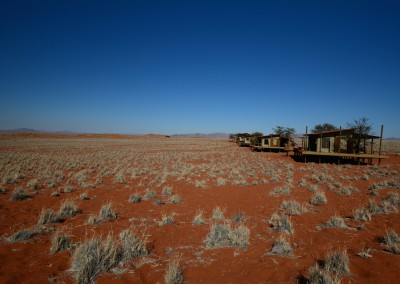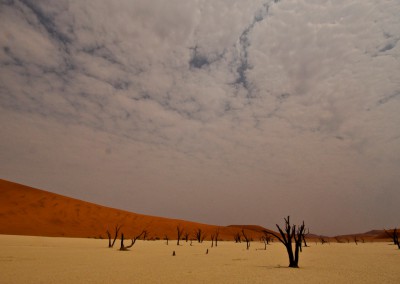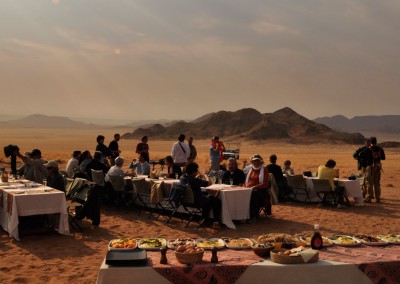Namibia
Namibia is one of the most enchanting places of the earth.
It’s a land of great contrast, enormous open spaces, breath taking landscape and wildlife that adapt to survive in the most challenging conditions.
Namibia is famous for the Namib desert along the Atlantic Ocean coastline where the tallest sand dunes in the world are formed, the Etosha National Park, a huge salt pan where a great population of wildlife can be seen, the Damaraland with its magnificent mountains and Twyfelfontein, one of the oldest Bushman rock art sites in the world. This area is also the home of the fascinating Himba people.
Deep in the wilderness you can enjoy the emotional scenery of the Namib Rand Nature Reserve or those of the Kunene River.
General Info
Geography
Namibia is 824,292 square kilometres. It’s located north of South Africa, bordering Botswana to the east, Angola and Zambia to the north and is touched by the Atlantic Ocean to the west. The capital is Windhoek. The other main city is the coastal town of Swakopmund.
Population
The last census shows a population of about 2.300.000 people. The main ethnic groups are the Ovambo, Kavango, Herero/Himba, Damara, Nama, Caprivian (Lozi), San, and Tswana.
Languages
The official language of Namibia is English. Afrikaans and German are widely used.
Oshiwambo is spoken by around 50% of the population. Nama/Damara is spoken by 11% of the population.
Currency
Namibia currency is the Namibian Dollar. After the country gained its independence in 1990, the Namibian Dollar was introduced to replace the South African Rand. The Rand is still legal tender since the Namibia Dollar is pegged to the Rand.
Climate
Namibia has got 3 main seasons.
Dry season goes from June to October; it is the cooler and drier time of the year. Daytime temperatures begin rising towards September, with October/November generally hot.
This is the best time of the year to admire the beautiful red dune silhouettes at Sossusvlei, to track animals in the wild and to enjoy high game concentrations around the waterholes in Etosha.
Green season from December to March; summer is very hot in Namibia but a very special season for the contrast of colour that the rain, if good, can create. It’s an excellent period for photographers who will enjoy crisp clear sky and unique landscape.
Transitional season from April to June, bring you the best of green and dry seasons with good weather and mild temperature.
Electricity
The Namibian electricity supply is 220/230 volts. Most plugs are 15 amp, 3 prong with round pins.
An adaptor can be provided directly at your lodge or by Mal d’Africa Safaris.
Travel By Road And Plane
Namibia has a limited road network and most of them are not tarred.
If you choose to self-drive, you will not need a 4×4 but it is advisable to rent a high clearance vehicle.
Some of the most remote areas are reachable only by plane or by 4×4.
Entry Requirements
For visa requirements, please contact directly manu@maldafrica.com or your nearest Namibian diplomatic mission.
Malaria
If you are visiting the northern part of Namibia on the Caprivi region you should take precautions. Please consult your doctor for prophylactic medication.
Tips and Tipping
As a rough guide: give 10% to 15% to a waiter in a restaurant. The tipping guidance for your safari ranger is provided at the different lodges, but it is completely at your discretion.
Security
Use common sense and take basic safety precautions. Keep valuables locked away.












